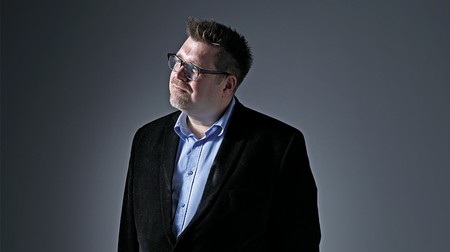‘Counterpart’ Cinematographer on Finding the ‘Honesty in the Photography’
By Whitney Friedlander
LOS ANGELES (Variety.com) – Cinematographer Luc Montpellier is no stranger to complicated television dramas. “Counterpart,” though, posed a new challenge for the camera department vet, as the Starz series featured parallel worlds that each had their own looks and rules, as well as inhabitants that were doubles of each other and therefore required the same actors to play opposite themselves in a scene. Because of how complicated the story already was, Montpellier says that the show’s production tried to “keep it as simple as possible.”
How did you decide on which color schemes to use to differentiate between the worlds?
On the other side … things are a lot more clinical and slightly cooler — and more medical and sterile. As opposed to our side, which is a lot warmer and familiar. It became earth versus cooler tones in a very subtle way when it came to wardrobe, lights, everything.
How hard is that to light without getting repetitive?
Even though it’s kind of a thriller with a science-fiction twist, we wanted it to feel like this is really happening. The mantra was always realism. …For me, it was always about the honesty of the photography — that’s where I really found my interest. How does the light within a scene feel honest all the time?
How does one actor playing dual roles affect your job?
The ultimate goal is to be able to feel like they’re actually two separate people. You don’t always want to be restricted with a wide shot and a split screen so that you kind of see there’s all this space between. You want to have the two characters interact. You want to have camera movement that might go around [one] actor and end up around another so that it feels very much, in a subtle way, that you’re photographing a scene that has two people. …Pace was an enormous challenge because you were shooting something that was supposed to be happening right in front of you, but sometimes it would take hours between the two sides.
What was your relationship like with director of photography Martin Ruhe?
It was important for us to be able to tag-team and have this one concise concept. …[Also] because all 10 episodes were written from the very beginning, you’re able to read the whole thing and design it like a long film.

